
Janus Henderson: Will global money trends recover?
The earlier monetary slowdown signals a likely loss of global economic momentum through late 2018, so Simon Ward Chief Economist at Janus Henderson Investors.
11.06.2018 | 13:47 Uhr
Near-complete April monetary statistics confirm an earlier indication that six-month growth of real narrow money in the G7 economies and seven large emerging economies was little changed from March and above the nine-year low reached in February. The earlier monetary slowdown signals a likely loss of global economic momentum through late 2018 but prospects are no longer deteriorating. Real broad money growth has also recovered slightly since February – see first chart.
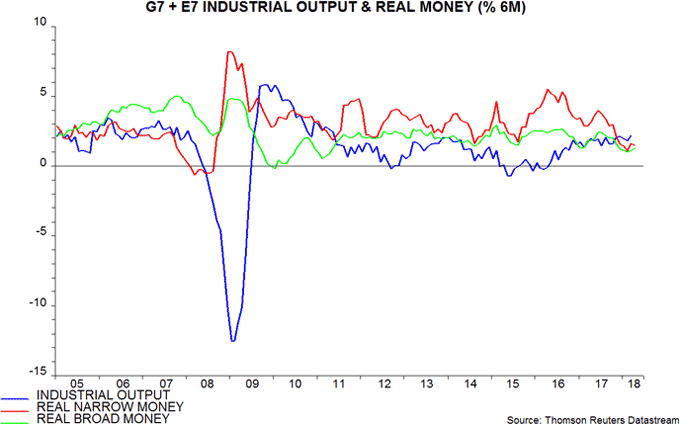
Will monetary trends revive more significantly into mid-year, implying a brighter economic outlook for end-2018 and early 2019? Such a scenario is possible but does not currently seem likely.
The recovery in G7 plus E7 six-month real money growth since February has been driven by a slower rate of increase of consumer prices (seasonally adjusted) – nominal money growth was unchanged between February and April. Recent firmer commodity prices suggest that six-month inflation will stabilise or partially retrace the recent decline.
The small change in G7 plus E7 real narrow money growth between March and April conceals a decline in G7 expansion offset by a pick-up in the E7 – second chart. Real money growth rose in China, Brazil, India, Russia and Taiwan. Recent capital outflows from emerging markets and an associated tightening of domestic financial conditions, however, could have a negative impact on monetary trends in some countries.
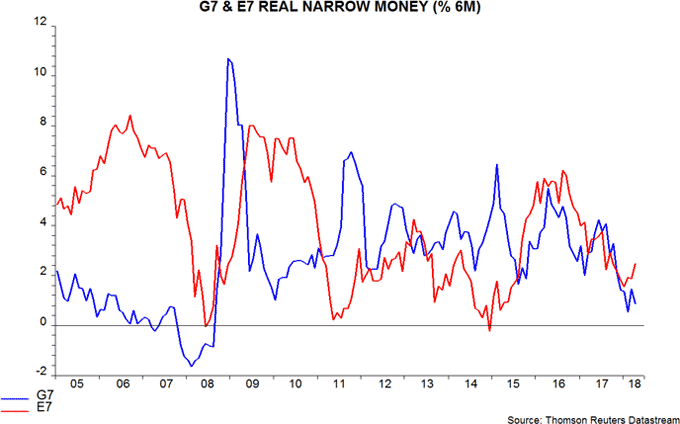
Previous posts discussed the possibility that US money trends would rebound in lagged response to tax cuts, mirroring experience after previous large reductions. No pick-up is yet evident: six-month narrow money growth fell back in April and is unlikely to have increased in May – the third chart includes a May estimate based on weekly data through 21 May.
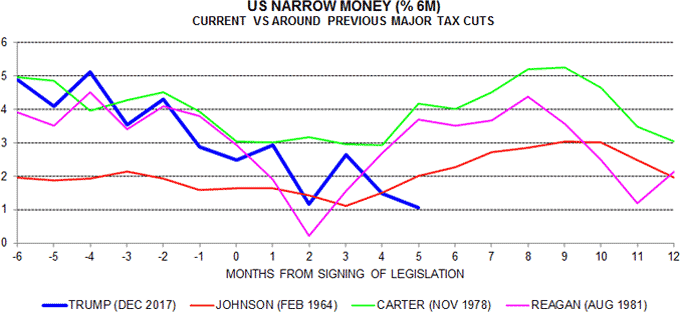
US and G7 money growth is probably being dragged down by slowing QE, with the 12-month running total of purchases of government and agency securities by the Fed, Bank of Japan, ECB and Bank of England already down by almost a half from its March 2017 peak and projected to continue to decline rapidly – fourth chart.
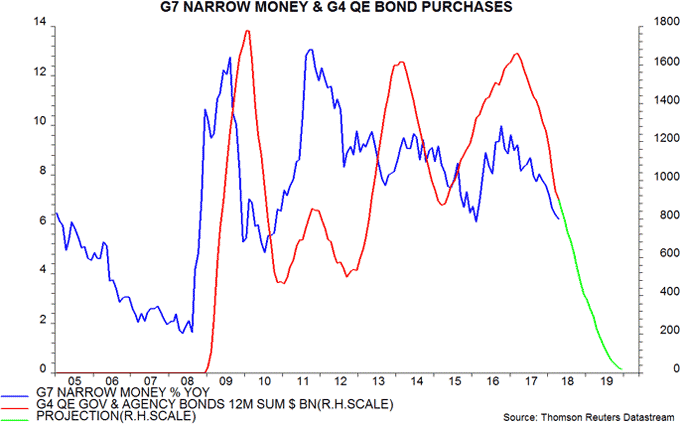
The six-month rate of change of real narrow money is lower than a year ago in almost all developed economies (exception: New Zealand) and has been negative for several months in Australia, where the housing market is slowing sharply in response to a belated regulatory clampdown on loose lending standards – fifth and sixth charts.
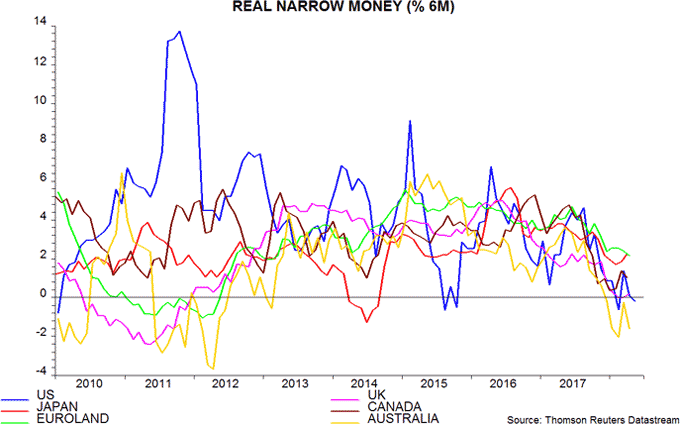
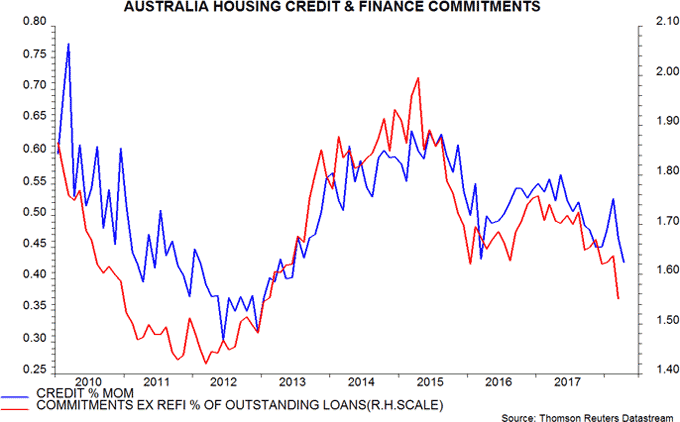
A recovery in money growth seems likely in China, reflecting a recent policy shift away from tightening towards modest easing and an associated fall in market rates. The timing and extent of any rebound, however, are uncertain: the two-year government yield is only 30 basis points lower than a year ago while previous significant reversals higher in narrow money growth have been preceded by a decline of at least one percentage point – seventh chart.
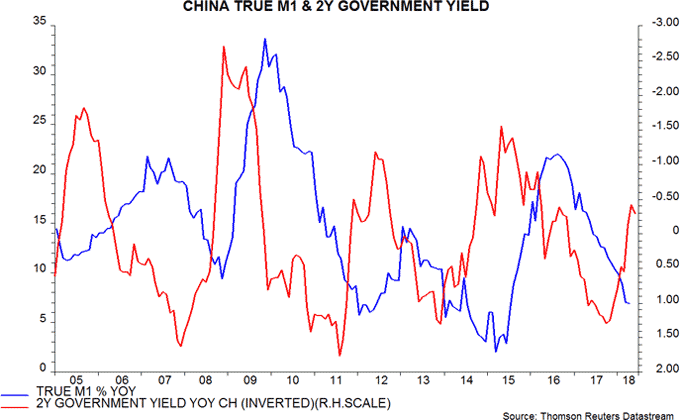




Diesen Beitrag teilen: